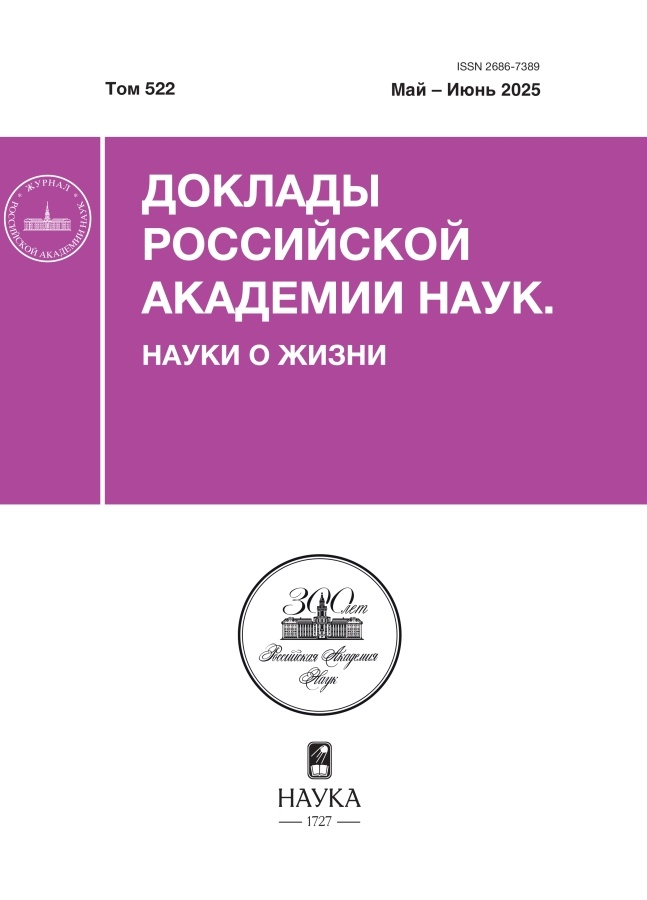Growth and adaptive significance of various forms of energy processes in marine fishes of Arctic
- Authors: Karamushko L.I.1, Karamushko O.V.1
-
Affiliations:
- Murmansk Marine Biological Institute, Russian Academy of Sciences (MMBI RAS)
- Issue: Vol 520, No 1 (2025)
- Pages: 145-150
- Section: Articles
- URL: https://archivog.com/2686-7389/article/view/682068
- DOI: https://doi.org/10.31857/S2686738925010242
- EDN: https://elibrary.ru/swduic
- ID: 682068
Cite item
Abstract
Based on expeditions and experimental studies, a quantitative assessment of the energy characteristics underlying the interaction of energy exchange processes in fish living in the Arctic has been carried out. The linear and weight growth of non–migratory species, the Arctic flounder Liopsetta glacialis (Pallas, 1776) of the Kara Sea, was studied for the first time. It has been established that in marine cold water fish species, the slowdown in biosynthesis processes leads to a relative decrease in the proportion of entropy generated by metabolic processes, while the growth process in fish at low temperatures becomes more efficient.
Keywords
Full Text
About the authors
L. I. Karamushko
Murmansk Marine Biological Institute, Russian Academy of Sciences (MMBI RAS)
Author for correspondence.
Email: karamushkol@mmbi.info
Russian Federation, Murmansk
O. V. Karamushko
Murmansk Marine Biological Institute, Russian Academy of Sciences (MMBI RAS)
Email: karamushkol@mmbi.info
Russian Federation, Murmansk
References
- Hochachka P.W., Somero G.N. Biochemical Adaptation: Mechanism and Process in Physiological Evolution. Oxford; N.Y.: Oxford Univ. Press, 2002. 466 p.
- Clarke A. Energy flow in growth and production // TREE. 2019. V. 34, iss. 6. P. 502–509.
- Karamushko L.I. Entropy and efficiency of growth in marine fish species of the Arctic // Doklady Biological Sciences. 2022. V. 507, № 6. P. 277–280.
- Fraser K.P.P., Peck L.S., Clark M.S., et al. Life in the freezer: protein metabolism in Antarctic fish // R. Soc. Open Sci. 2022. V. 9, iss. 3: 211272.
- Lucassen M., Schmidt A., Eckerle L.G., et al. Mitochondrial proliferation in the permanent vs. temporary cold: enzyme activities and mRNA levels in Antarctic and temperate zoarcid fish // Am. J. Physiol. Regul. Integr. Comp. Physiology. 2003. V. 285, iss. 6. P. R1410–R1420.
- Somero G. Temporal patterning of thermal acclimation: from behavior to membrane biophysics // J. Exp. Biology. 2015. V. 218, iss. 2. P. 167–169.
- Fields P.A., Dong Y., Meng X., et al. Adaptations of protein structure and function to temperature: there is more than one way to ”skin a cat” // J. Exp. Biol. 2015. V. 218, iss. 12. P. 1801-1811.
- Peck, L.S. A Cold Limit to Adaptation in the Sea. Trends Ecol. Evol. 2016. V. 31, iss. 1. P. 13–26.
- Pörtner H.-O. Climate impacts on organisms, ecosystems and human societies: integrating OCLTT into a wider context // J. Exp. Biology. 2021. V. 224, iss. 1. Special Issue: Predicting the Future: Species Survival in a Changing World.
- Моисеев П.А. Биологические ресурсы Мирового океана. М.: Изд-во Пищевая промышленность, 1969. 339 с.
- Андрияшев А.П. Рыбы северных морей СССР. М.; Л.: Изд-во АН СССР, 1954. 556 с.
- Graham R.M., Cohen L., Petty A.A., et al. Insreasing frequency and duration of Arctic winter warming events // Geophys. Res. Lett. 2017. V. 44. P. 1–10.
- Карамушко Л.И. Влияние питания на скорость метаболизма и специфическое динамическое действие у трески Gadus morhua morhua, зубатки Anarhichas lupus и морской камбалы Pleuronectes platessa // Зоол. журнал. 1993. Т. 72, вып. 4. С. 106–115.
- Peck L.S. Feeding, metabolism and metabolic scope in Antarctic marine ectotherms. In Cold Ocean Physiology (Pörtner H.O. and Playle R., Eds). Cambridge: Cambridge Univ. Press, 1998. P. 365–390. (Society of Experimental Biology, seminar series, 66).
- Secor S.M. Specific dynamic action: a review of the post-prandial metabolic response // J. Comp. Physiology B. 2009. V. 179, iss. 1. P. 1–56.
- Jobling M. The influence of feeding on the metabolic rate in fishes: a short review // J. Fish Biol. 1981. V. 18, № 4. P. 385–400.
Supplementary files













